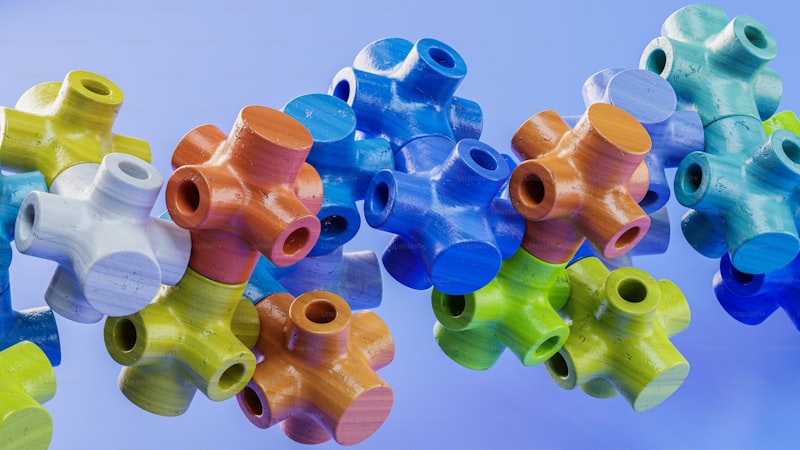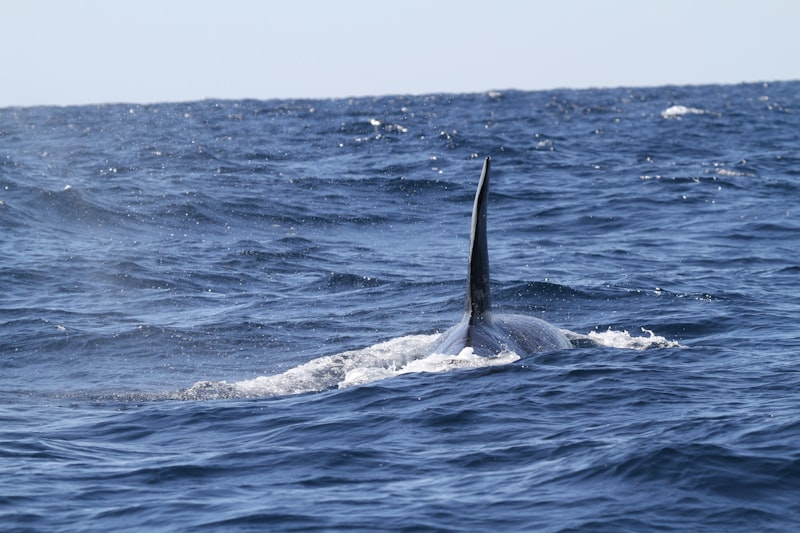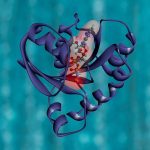The danger lies not only in their size but in their persistence and potential to accumulate toxins. Marine animals often mistake microplastics for food, leading to ingestion and subsequent health issues. This ingestion can obstruct digestive tracts, cause starvation, and even transfer harmful chemicals through the food chain to humans who consume seafood.
Efforts to mitigate this threat are underway globally. Innovations in waste management and recycling aim to reduce plastic waste entering oceans. Additionally, there’s a push for sustainable alternatives to single-use plastics and stricter regulations on plastic production and disposal.
Understanding the impact of marine microplastics requires a multifaceted approach. Scientists study their distribution patterns, ecological impacts, and potential solutions to prevent further contamination. Public awareness and education play crucial roles in fostering behavioral changes that reduce plastic consumption and promote responsible waste disposal.
As we navigate the complexities of ocean conservation, addressing the menace of marine microplastics demands concerted global action. By implementing effective policies, supporting innovative technologies, and fostering a collective responsibility towards ocean stewardship, we can safeguard marine ecosystems for future generations.
Hidden Killers: How Marine Microplastics Are Jeopardizing Ocean Life
Did you know that beneath the sparkling surface of our oceans lies a hidden threat? Marine microplastics, tiny fragments of plastic less than 5mm in size, are silently jeopardizing ocean life. These minuscule pollutants originate from a variety of sources, including the breakdown of larger plastic debris and microbeads used in cosmetics.
Imagine a microscopic piece of plastic, barely visible to the naked eye, floating in the vast ocean. Despite their small size, marine microplastics have a colossal impact on marine ecosystems. They are mistaken for food by marine organisms, from the smallest zooplankton to the largest whales. This ingestion can lead to internal blockages, nutrient deprivation, and even starvation among marine species.
The journey of marine microplastics is both extensive and alarming. These particles can travel thousands of miles, carried by ocean currents, and infiltrate even the most remote marine habitats. As they accumulate in the food chain, starting from plankton and moving up to fish and eventually humans, they pose a serious risk to environmental and human health alike.
What makes this issue even more pressing is the persistence of microplastics in the marine environment. Unlike organic matter, plastic does not biodegrade completely; instead, it breaks down into smaller and smaller pieces known as microplastics. This means that once microplastics enter the ocean, they remain there indefinitely, continuously threatening marine life.
As we navigate the complexities of marine pollution, addressing the menace of microplastics requires collective action. From reducing plastic consumption to advocating for policies that minimize plastic waste, every effort counts in safeguarding our oceans and the creatures that call them home.
Ocean’s Silent Invaders: Unveiling the Impact of Microplastics
Imagine a world beneath the waves, where the beauty of the ocean hides a silent threat: microplastics. These tiny, often invisible fragments of plastic have become one of the most pressing environmental concerns of our time. Despite their size, they wield a colossal impact on marine ecosystems, quietly infiltrating every corner of the ocean.
What exactly are microplastics? They originate from the breakdown of larger plastic items like bottles and bags, or they are manufactured in small sizes for personal care products like exfoliating scrubs. Their diminutive size, often less than 5 millimeters, makes them difficult to detect but easy to ingest for marine life, from plankton to whales.
The implications are profound. Marine creatures mistake microplastics for food, leading to internal blockages, malnutrition, and even death. This contamination extends up the food chain, affecting larger predators—including humans—who consume seafood. Beyond ingestion, microplastics leach harmful chemicals, further disrupting fragile ocean ecosystems and biodiversity.
Addressing this issue demands global action. Initiatives to reduce single-use plastics and improve waste management are critical steps. Innovations in biodegradable materials offer hope for a future where plastics do not persist indefinitely in our seas. Education and awareness are equally vital; understanding the consequences of everyday choices empowers individuals to make sustainable decisions.

As we navigate the complexities of environmental conservation, confronting the impact of microplastics remains an urgent priority. Each piece of plastic removed from circulation represents a step towards restoring the health of our oceans. Together, we have the power to mitigate this silent invasion and preserve the wonders that lie beneath the surface.
From Sea to Plate: How Microplastics Threaten Seafood Safety
Imagine enjoying a succulent seafood dish, the flavors dancing on your palate as you savor each bite. Yet, beneath the surface, there’s a hidden threat lurking: microplastics. These tiny, often invisible particles are increasingly contaminating our oceans and seafood, posing a serious risk to food safety.
Microplastics originate from various sources, including larger plastic debris that degrades over time, microbeads from personal care products, and synthetic fibers from clothing. These plastics find their way into oceans through wastewater, runoff, and improper disposal. Once in the water, they persist for years, breaking down into smaller and smaller pieces, some even microscopic in size.
The journey of microplastics from sea to plate begins when marine life unwittingly consumes them. Small fish, shellfish, and plankton mistake these particles for food, ingesting them along with their natural prey. As larger predators consume these smaller creatures, the accumulated microplastics bioaccumulate up the food chain, eventually reaching our dinner tables.
The implications for seafood safety are profound. Studies have shown that microplastics can absorb and concentrate toxins from the surrounding seawater, such as heavy metals and persistent organic pollutants. When humans consume contaminated seafood, these toxins can potentially enter our bodies, raising concerns about long-term health effects.
Efforts to mitigate this threat are underway, focusing on reducing plastic pollution at its source, improving waste management practices, and promoting sustainable fishing methods. However, addressing microplastic contamination requires global cooperation and innovative solutions across industries.
While seafood remains a beloved delicacy enjoyed worldwide, the presence of microplastics highlights a pressing issue that cannot be ignored. By raising awareness, implementing effective policies, and making conscious consumer choices, we can work towards safeguarding both our oceans and our health.
Beyond the Surface: Exploring the Depths of Marine Microplastic Pollution
Marine environments, once thought to be vast and untouched, are increasingly revealing a hidden threat beneath their shimmering surfaces: microplastic pollution. These minuscule plastic particles, often less than 5 millimeters in size, have permeated even the most remote corners of our oceans. While macroplastics like plastic bags and bottles capture headlines, it’s the unseen microplastics that silently pose a grave danger to marine life and ecosystems.
Imagine the ocean as a bustling city, with marine organisms of all sizes navigating its streets. Now, picture these streets littered not with debris visible to the naked eye, but with tiny, nearly invisible fragments of plastic. These microplastics originate from various sources: they can be the result of the breakdown of larger plastic items due to UV radiation and wave action, or they can be intentionally manufactured for use in personal care products like exfoliating scrubs.
Once in the ocean, these particles are ingested by marine organisms at the base of the food chain, such as plankton and small fish. As larger predators consume these smaller creatures, the microplastics accumulate and magnify through the food web. The consequences are profound: from altering marine animal behavior and reproductive cycles to posing potential risks to human health through seafood consumption, the impact of microplastic pollution extends far beyond the water’s edge.
Efforts to mitigate this growing crisis involve both global policy initiatives and grassroots community actions. Innovations in waste management and recycling aim to reduce the input of plastic into oceans, while scientific research continues to uncover the full extent of microplastic contamination and its ecological implications. As awareness grows, so does the urgency to find sustainable solutions that protect our oceans for future generations.

This article aims to highlight the pervasive issue of microplastic pollution in a conversational and engaging manner, emphasizing its impact on marine ecosystems and the steps being taken to address this pressing environmental challenge.
Invisible Threats: The Growing Menace of Microplastics in Our Oceans
Did you know that our oceans are silently under siege from a threat so small yet so pervasive? Enter the world of microplastics – tiny fragments of plastic less than five millimeters in size that have infiltrated even the remotest corners of our marine ecosystems. These microscopic menaces pose a colossal environmental challenge, with far-reaching implications for marine life and human health alike.
Microplastics originate from various sources, including the breakdown of larger plastic debris, microbeads from personal care products, and synthetic fibers from textiles. Once in the ocean, they persist indefinitely, resisting degradation and accumulating in staggering quantities. Their diminutive size belies their impact: marine organisms, from plankton to whales, mistake them for food. This ingestion can lead to bioaccumulation of toxic chemicals within the food chain, threatening the health of species and ultimately, our seafood.
The sheer ubiquity of microplastics paints a daunting picture. They have been found everywhere from the Arctic ice to the depths of the Mariana Trench, transcending geographical boundaries and infiltrating every level of the marine ecosystem. This pervasive contamination underscores the urgent need for concerted global action.
Scientists and environmentalists are racing to unravel the full extent of microplastic pollution and devise strategies to mitigate its effects. Innovative technologies are being developed to detect and quantify microplastics more accurately. Policy-makers are advocating for stricter regulations to curb plastic production and improve waste management practices.
As stewards of the planet, we face a critical juncture. Our collective actions today will determine the health of our oceans tomorrow. By raising awareness, supporting research, and advocating for sustainable practices, we can turn the tide against the invisible threat of microplastics and safeguard the oceans that sustain life on Earth.
Frequently Asked Questions
What are the potential dangers of marine microplastics to marine life?
Learn about the risks posed by marine microplastics to marine life, including ingestion by marine organisms, potential toxicity from chemical additives, and the accumulation of plastics in the food chain.
How do microplastics enter the marine environment?
Learn how microplastics enter the marine environment, detailing their sources such as plastic debris breakdown and microbead release from personal care products.
How can individuals reduce their contribution to marine microplastic pollution?
Learn how individuals can minimize their impact on marine microplastic pollution through simple actions like reducing single-use plastics, properly disposing of waste, supporting policies for plastic reduction, and participating in beach clean-ups.
What measures are being taken globally to address marine microplastic contamination?
Discover the global measures implemented to combat marine microplastic pollution, focusing on innovative technologies, international agreements, and sustainable practices.
What are marine microplastics and how do they impact ocean ecosystems?
Marine microplastics are tiny plastic particles measuring less than 5 millimeters in size that accumulate in oceans. They impact ocean ecosystems by being ingested by marine life, leading to physical harm, toxin absorption, and biomagnification up the food chain. Their presence threatens marine biodiversity and can disrupt ecological balance.


